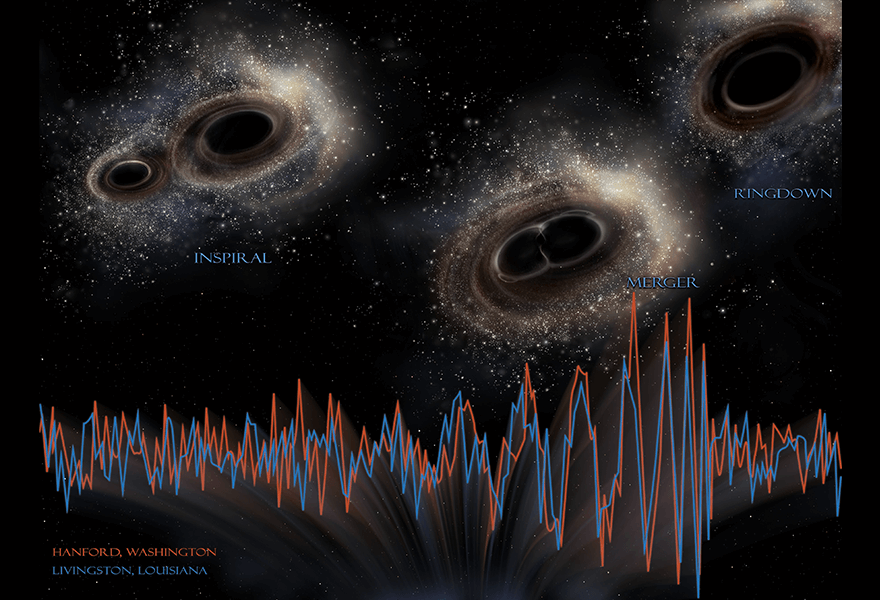To over-ring or not to over-ring?

Image credit LIGO-Virgo collaboration
Strong members Gregorio Carullo and Vitor Cardoso, together with collaborators from Johns Hopkins University, have recently published a [Reply](https://arxiv.org/abs/2310.20625) to a Comment in Physical Review Letters. The debate focuses around the claimed detection of higher harmonics in a black hole vibrational spectrum, detected through the first gravitational wave signal ever observed, GW150914.
If confirmed, measurements of multiple black hole frequencies would allow us to shed light on the nature of dark compact objects sourcing such gravitational wave signals, and understand if we are really observing the black holes predicted by Einstein's gravity, or something much more exotic, a possibility with revolutionary consequences.
Although the Comment to the original article did provide a small improvement to Strong [analysis](https://doi.org/10.1103/PhysRevLett.129.111102) published in Physical Review Letters, the Reply shows how the impact of these improvements is minor, and constraints from data still fall short of reaching the minimum standard required to investigate such an important question on fundamental building blocks of our Universe. Most importantly, as discussed in the Reply and extensively demonstrated in a dedicated [follow-up](https://arxiv.org/abs/2302.03050), the physical model underlying the whole analysis framework possesses many flaws, and is fundamentally unsuited to investigate the nature of such puzzling monsters of the cosmos.
On the positive note, a new observing run of the LIGO-Virgo-Kagra detector is already rolling, with many new signals flooding our observatories. Many surprises, and possibly the first confident detection of such elusive higher harmonics, might be already hiding in these data. Stay tuned!
